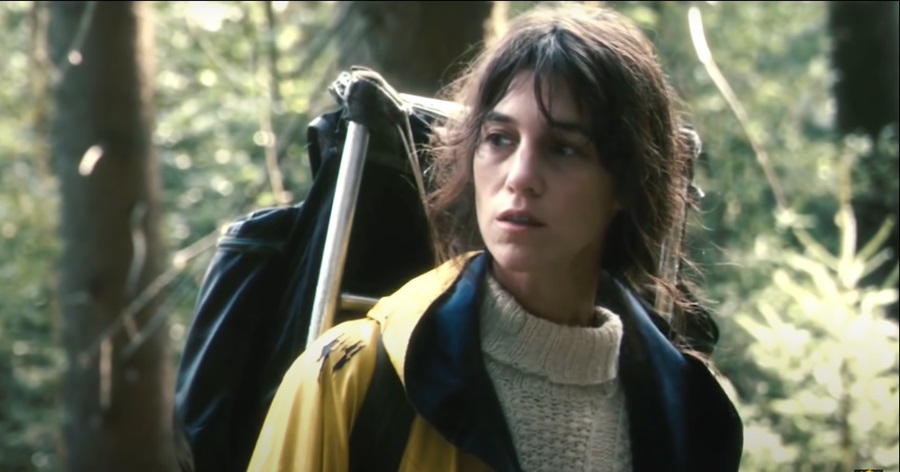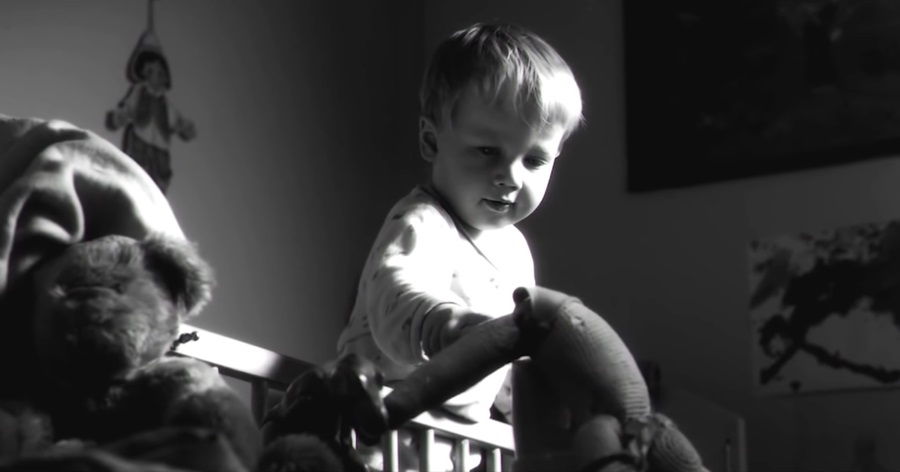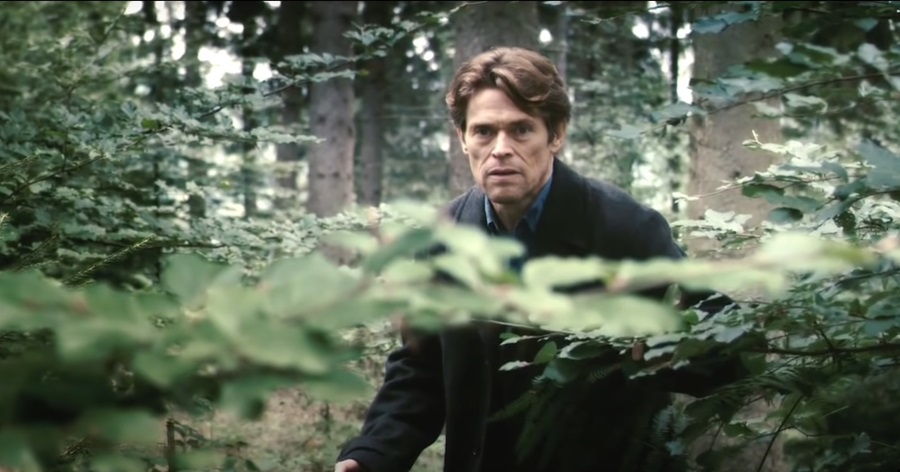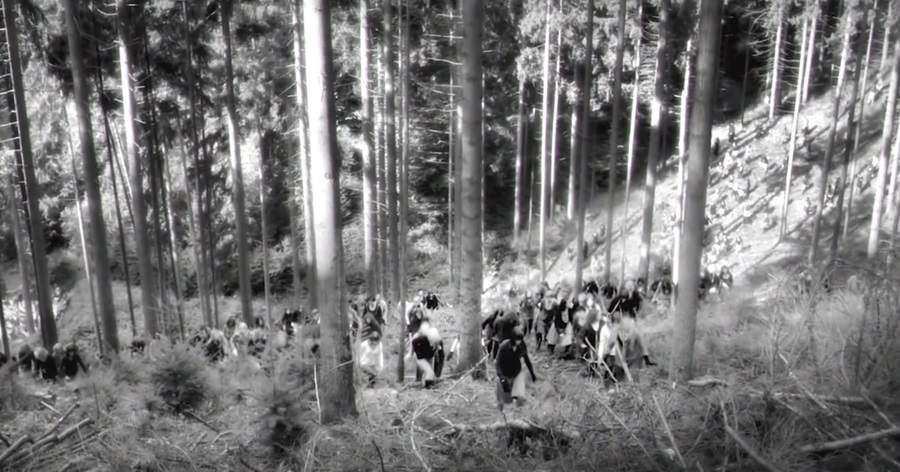Lars von Trier’s Antichrist is a provocative and disturbing psychological horror film that delves deep into the darkest recesses of human nature. It is a film that polarizes viewers, offering an unsettling meditation on grief, guilt, and madness. Directed by von Trier, the movie centres on a couple's attempt to cope with the devastating loss of their child, only to descend into a nightmarish world of violence and despair. The raw emotion, graphic imagery, and exploration of human suffering make Antichrist a polarizing but unforgettable film.
The story follows a married couple, simply known as "He" (Willem Dafoe) and "She" (Charlotte Gainsbourg), who are devastated after the accidental death of their infant son, Nic. While the couple is making love, their son climbs out of his crib, moves to a window, and falls to his death. Overwhelmed with grief, the woman becomes paralyzed by guilt and depression, unable to cope with the loss. Her husband, a psychotherapist, takes it upon himself to help her recover from her overwhelming grief by taking her to a secluded cabin in the woods.

As they retreat to the wilderness, the couple's relationship unravels. He tries to use therapeutic methods to help his wife, but the isolation of the forest, the eerie surroundings, and her unprocessed trauma push her deeper into a state of madness. She begins to exhibit increasingly erratic and violent behaviour, culminating in acts of physical and emotional destruction.
Why Did the Woman Not Help the Infant?

One of the most haunting questions that loom over the film is why the woman did not help her infant when she saw him climbing out of his crib and toward the window. This moment is crucial, as it reveals the character’s psychological state. Throughout the film, there are hints that the woman had long been struggling with her role as a mother. The film suggests that she may have subconsciously allowed her child’s death to happen, rooted in deep-seated feelings of inadequacy, guilt, and fear.
She is wracked with guilt, not just because of the death itself but because she was aware of what was happening and did nothing to stop it. This unresolved guilt becomes the driving force behind her descent into madness. Von Trier uses this chilling event as a metaphor for the destructive forces of grief and guilt, showing how her inability to act in that moment leads to her complete emotional and mental breakdown.
The Descent into Madness: Nature as a Hostile Force
Nature plays a significant role in Antichrist, serving as both a setting and a reflection of the characters’ inner turmoil. As the couple ventures into the wilderness, the forest itself becomes an antagonist—an external manifestation of the woman’s internal chaos. It is here that she fully descends into madness, and nature itself seems to conspire against them, representing the primal, uncontrollable forces of life and death.
He tries to rationalize her emotions and apply clinical methods to her grief, but his attempts only exacerbate her mental state. She becomes increasingly convinced that nature—and women by extension—is inherently evil. Her academic work on historical witch hunts and the violence inflicted on women fuels this belief, and she starts to associate herself with the darkness and chaos she sees in nature.
The Climactic Violence: A Test of Survival
As the woman's mental state deteriorates, the film turns more graphic and violent. She accuses her husband of trying to control her and lashes out in shocking acts of violence. The violence between them escalates, culminating in scenes of intense brutality. The film’s disturbing imagery becomes a metaphor for the destructive power of guilt, grief, and repression.
At the height of her madness, she attacks her husband, engaging in brutal acts that are difficult to watch. In these moments, von Trier explores the extremes of human suffering and the breakdown of rationality under the weight of overwhelming grief. The man’s attempts to save his wife become futile as he realizes that her despair has consumed her entirely.
The Ending of Antichrist Explained

The ending of Antichrist is as enigmatic as the rest of the film, leaving viewers with a sense of deep unease. After a final confrontation in the woods, the man strangles the woman to death. The camera lingers on the aftermath, with the man walking through the forest in a daze. As he walks, he sees hundreds of faceless women ascending the hills, seemingly coming toward him. The final shot of the film leaves the viewer with more questions than answers.
The ending can be interpreted in several ways. On one level, it is a culmination of the man’s futile attempts to control the uncontrollable forces of nature and human emotion. His effort to “fix” his wife fails, and he is left alone, wandering through a forest that represents the chaotic, indifferent universe. The faceless women at the end could symbolize the forgotten victims of history, echoing the woman’s belief that nature—and women—are inherently tied to evil and suffering.

Alternatively, the ending could be seen as a reflection of the man’s own descent into madness. By the end of the film, both characters are consumed by the dark forces they sought to escape, leaving the audience with a haunting sense of inevitability. The film offers no easy answers, leaving the viewer to grapple with the meaning of the ending and the implications of the characters’ actions.
Viewers’ Reaction to the Ending
Antichrist is a film that left many viewers deeply divided. The graphic violence, disturbing imagery, and bleak portrayal of human nature were met with both praise and outrage. Some viewers and critics hailed the film as a bold and uncompromising exploration of grief and the human psyche, while others found its extreme content gratuitous and difficult to watch.
The film’s ambiguous ending, in particular, sparked considerable debate. Many viewers were left unsettled by the lack of resolution and the open-ended nature of the conclusion. The faceless women, the brutal acts of violence, and the themes of madness and despair were interpreted in various ways, leading to a wide range of opinions about what the film ultimately means.
Despite its polarizing reception, Antichrist has garnered a cult following and is often discussed as one of von Trier’s most daring works. Its unflinching exploration of dark psychological themes continues to provoke thought and discussion among viewers, making it a film that resonates long after the credits roll.
Antichrist Conclusion: A Meditation on Guilt and Destruction
Antichrist is not an easy film to watch, but it is undeniably powerful. Lars von Trier pushes the boundaries of cinema, using shocking imagery and complex themes to explore the devastating effects of grief and guilt. The film’s portrayal of a couple’s descent into madness serves as a harrowing reminder of the destructive power of unresolved trauma.
Antichrist leaves viewers with more questions than answers, forcing them to confront the uncomfortable realities of human suffering. The film’s ambiguous ending and its exploration of nature, evil, and human despair make it a haunting and thought-provoking experience.
The woman’s failure to act when her son climbed out of the window, the man’s futile attempts to save her, and the violent climax all contribute to a film that refuses to offer easy solutions. Instead, Antichrist serves as a dark reflection on the complexities of the human condition, leaving the viewer to grapple with the lingering sense of unease long after the film has ended.






